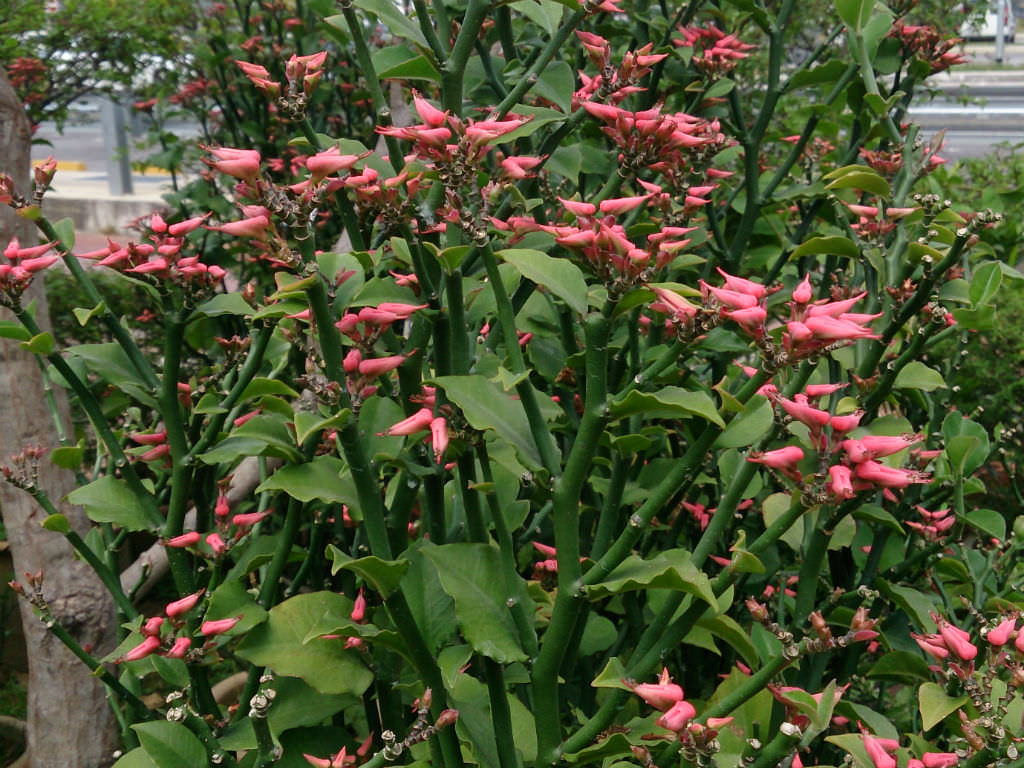

Those kept in the traditional pots must have the soil's top half to dry in between waters. Bright, indirect location is still advised however, you must keep on the drier side to avoid over-watering from its moisture-retentive leaves. We'd recommend a windowsill, or a nearby table is the perfect location for this plant, as a lack of natural light penetrating the compost's face may result in root rot and soil mould. Specimens kept on a shelf where the soil line isn't in view of the natural light must follow the rule of 'near-drenches between droughts'. Ī minimal amount of morning or evening sunlight is fantastic for Devil's Backbones.

Allow the soil's top half to dry in between waters, reducing this slightly further in the autumn and winter.Provide a bright location with a splash of either morning or evening sunlight for quality growth.Need the answer to a specific plant query? Book a 1-to-1 video call with Joe Bagley, the website's friendly author, to overcome and address your niggling problem! Available on iMessage, WhatsApp, Facebook Messenger & more. Origins, Temperature, Propagation, Repotting & Toxicity.Location, Water, Humidity & Fertilisation.John Kunkel Small, 20th century American explorer and botanist, who probably collected or described this plant.Euphorbia tithymaloides 'Variegatus' - Formally known as ' Pedilanthus tithymaloides'.

The subspeices epithet ‘smallii' is named after Dr. The species epithet ‘tithymaloides’ is derived from the ancient name used by Pliny the Elder to describe a ‘Euphorbia’, ‘Tithymalus’, which resembles the plant. Juba II was treated by a plant (probably the Resin Spurge, Euphorbia resinifera) with powerful medicinal properties, of which he named after his Greek physician 'Euphorbus'. > The genus epithet ‘Euphorbia’ is derived from 'Euphorbus', the Greek physician to Juba II, King of Mauretania. Handle with extra care and wear gloves if need be.

Caution: Roots, stems and leaves of plant contain toxic juice. Prune back occasionally to get a bushier plant. Plant is drought tolerant and defoliation can occur should there be too much a water stress. Colours on foliage seem to be light dependent, with strong, direct light to generate more suffused pink or red on the foliage. Fruit: Fruits sulcate (grooved or furrowed), 0.5 to 0.6 cm in diameter seeds subglobose (not entirely spherical), grey-brown, about 0.45 cm long and 0.3 cm wide.Īdaptable to a wide range of light conditions, it prefers semi-shade condition with a few good hours of direct sun and the rest of the day with filtered light. Flower: Flowers a cyathium (cup-shaped inflorescence surrounded with a collection of bracts), vary from pink to red. Stem: Stems somewhat erect to spreading, stout, succulent, darker green (usually serve as the photosynthetic organ in the absence of deciduous leaves), zig-zag growing, glabrous (smooth not rough or hairy), often having a raised, nearly ledge-like swellings subtending its foliage. Leaves simple, alternate, waxy, lanceolate (lance head-shaped), with acuminate (tapering to a point) tips and sessile (attached directly at the base not having a stalk) bases, glabrous, about 4 to 7 cm long and 3 to 4 cm wide, with undulated to entire margins, midribs diffusing from white to yellow to green. A peculiar, robust, small to medium-sized, moderately fast-growing, somewhat erect shrub that possesses distinctive, strong, stout, succulent zig-zag stems and brightly variegated foliage with a beautiful mix of green, white and yellow.


 0 kommentar(er)
0 kommentar(er)
